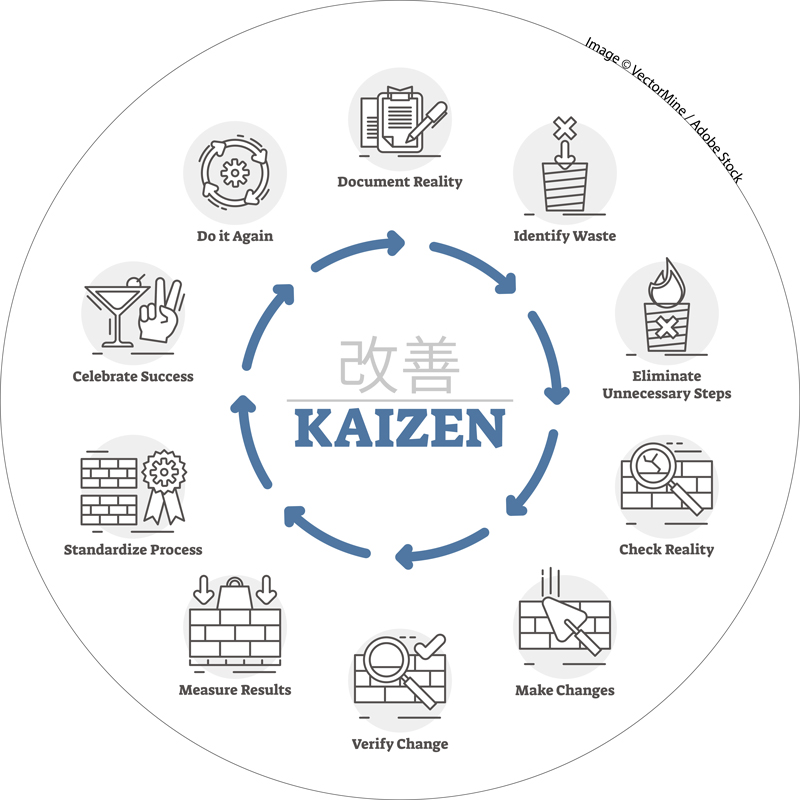We are all creatures of habit. When we establish routines, we can carry out tasks so that we don’t have to think about them; we work on autopilot. We rarely think about whether they are the most productive or efficient way to do things. Many will be “legacy” – “how we’ve always done things around here”.
While habits can be useful and effective, many are not – and can work against our effectiveness and productivity. The trick is being able to capture these, and having a process of improvement to change systems and cultural habits. Once practice owners and partners have clarity and consensus of their vision for the business – and have a clear understanding of their roles – it is time to start to create an “achievement culture” for the practice.
By this, I mean a culture of accountability and a culture of improvement, where team members will seek out barriers that are holding the business back and openly work to overcome these, continually seeking improvement and efficiency. This culture becomes a way of life in the practice, while giving the team autonomy and a sense of fulfilment and contribution.
The outcome of this culture development is ongoing improvement in the practice, while empowering the team to contribute to its success. It provides an avenue for problem-solving, and improves current processes – whether documented or not – and a system of creating sustainable change.
Key outcomes
This culture can:
- establish effective and purposeful team meetings
- set meeting protocols
- create team unity
- create an organisational culture
- remove business waste and frustrations (non-value adding)
- develop an accountability and learning culture (no blame)
- introduce value add
- create value for clients and a memorable client experience (retention)
- free up owners’ and managers’ time
- give ownership to the team
- establish procedures and protocols that are owned by the team
- correct or modify behaviours
Step by step
Great, I hear you say, but how on earth do we implement this cultural change?
I’d like to introduce you to the Japanese business philosophy Kaizen, which says step-by-step improvements are the surest, easiest and quickest road to maximising productivity and quality.
Kaizen is a problem-solving process. For the problem to be correctly understood and solved, it must first be recognised, and relevant information gathered and analysed. Trying to solve a problem without facts and data is like resorting to hunches and feelings – not a very scientific or objective approach.
Collecting information on the current situation helps you to understand where you are now – and serves as a starting point for improvement.
Process is a priority
All work in practice is a series of processes – and each process has its “supplier” as well as its “customer”. Most people in your practice deal with internal customers (colleagues) as well as external customers (clients). This realisation should lead to a commitment to never pass on a defective part or inaccurate information to those next in the process.
When everyone in the business practises this truism, the external customers receive a higher-quality service as a result.
Put simply, the Kaizen method is a way of thinking. Its Japanese roots essentially means “continuous change”.
Although the Kaizen strategy aims at making continuous improvement, its impact may be limited if everyone is engaged in it just for the sake of it without an overall aim or goal.
Management must take the time to devise a long-term strategy, broken down into medium-term and annual plans, with SMART targets and objectives. It is most effective when everyone is working towards a shared vision or goal. Without a goal, Kaizen is like taking a journey without a destination.

Continuous improvement
Japanese managers see Kaizen’s primary role as that of sparking employee interest in continuous improvement, encouraging them to provide many suggestions – no matter how small, or, at first, slightly trivial they may appear. They do not expect to reap great economic benefits from each suggestion – developing a Kaizen mindset and self-disciplined employee is the primary goal.
Veterinary practices often decide they want to make changes in the way they function. In theory, these changes sound as if they could be beneficial, but they hardly ever get off the ground, or “stick”. Before long, they are back to the same old ways because the changes were just too much to get in place and embed.
Kaizen methods can help you work around that and get the changes you want, but over time in a process of continuous improvement.
Kaizen is not a one-off goal to be completed. It is about a new state of mind that involves looking at your practice and figuring out where you can improve on a small and sustainable scale, and implement change. It could be something quite minor, but what matters is that change occurs and stays that way.
If you implement a bunch of small changes consistently, before long, you will see a “step change” in the performance of your team and practice.
It is essential for you and your team to step back and take a look at your practice, and recognise where improvements can be made. One of the challenges is recognising when something is no longer working or serving you well – be that processes, communication or attitudes.
Make it happen
When you get to this point, it is time to do something. The sooner you address the problems, the easier it is to move on and see the continuous improvement you are seeking to achieve.
It is important to note that continuous improvement never adds difficulty or unpleasantness to employee workloads. Each employee is actively involved in the improvement process. It is a constant process that exists as a way of life in which non-value add and waste is consistently identified, and eliminated as it appears.
The teams get together on a regular basis, and runs through a system designed to capture and eliminate every possible non-value add and waste – for example, waiting, communication lags, service defects, client satisfaction and procedures. Each non-value add is remedied where possible and the process is repeated until the waste is rectified or removed.
Continuous improvement is not a one-time planned business project, but an approach to increase productivity that places focus on greater efficiency.
A Kaizen workplace puts people first – in pursuit of eliminating non-value add and waste. It focuses on eradicating or simplifying the hardest and least pleasant work from the process.
In practice, it is a series of constant, small incremental improvements that, over time, make all the difference to your team’s performance, your practice’s success and your clients’ experience of doing business with you.

Leave a Reply